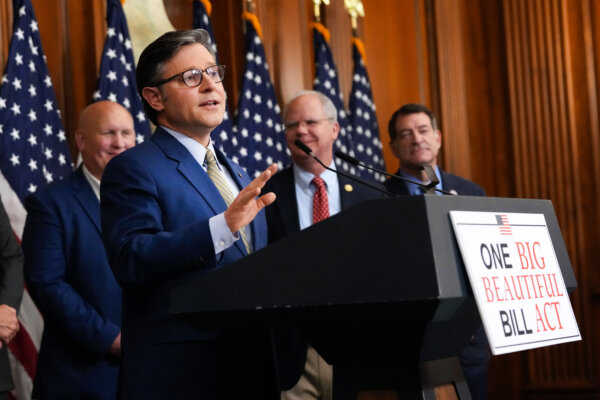![]() The One Big Beautiful Bill Act contains changes to Medicaid that Republicans say will reduce fraud, waste, and abuse, making the program more sustainable for the future.
The One Big Beautiful Bill Act contains changes to Medicaid that Republicans say will reduce fraud, waste, and abuse, making the program more sustainable for the future.
Democrats, however, have objected to the potential loss of coverage by several million enrollees, as forecast by the Congressional Budget Office (CBO), and the potential financial impact on small rural hospitals.
Both parties agree that Medicaid is a vital part of the country’s social safety net, providing health coverage for more than 72 million people, many of whom are children from low-income families, and elderly, or disabled people.
Yet the program costs more than $900 billion a year, more than two-thirds of which is paid by the federal government. And the cost has grown rapidly—more than 130 percent in 10 years.
Semi-Annual Eligibility Verification
Medicaid is intended for low-income people, so annual income certification is currently required.
Under this bill, that would be done every six months, and includes providing proof of citizenship.
According to CBO data, some 1.4 million people who are not legal residents of the United States are currently enrolled in Medicaid.
Others see additional administrative steps as a barrier to health coverage for people who qualify.
Community Engagement Requirements
In order to maintain eligibility, some Medicaid enrollees would be required to spend 20 hours per week in employment, educational activities, training, or community service.
This provision applies to adults who are not disabled and are not responsible for caring for children or other dependents.
About 90 percent of Republicans and more than half of Democrats favor these provisions in the bill, according to the health policy think tank KFF.
However, some say they do more harm than good.
“Work requirements impose administrative barriers and red tape that lead to coverage losses among both people who are working as well as people the policies purport to exempt,” according to Gideon Lukens and Elizabeth Zhang of the Center for Budget and Policy Priorities, a progressive think tank.
“They also lead to coverage losses for those who are between jobs,” Lukens and Zhang wrote.
Cost-Sharing
The bill requires states to set cost-sharing amounts to be paid by some Medicaid recipients.
This provision applies only to patients covered under the Medicaid expansion who earn between 100 percent and 138 percent of the federal poverty level.
Primary care, mental health and substance abuse treatment, and emergency care provided in a hospital emergency department are exempt from this requirement.
The amount of the shared payment will be determined by each state, but cannot exceed $35.
Currently, prescription drugs have a mandatory cost share of $1 to $4. That remains the same.
Reduction of Medicaid Provider Taxes
The bill includes a provision that shrinks but does not eliminate a legal maneuver that allows states to increase their reimbursement from the federal government without providing additional services to Medicaid beneficiaries.
This system allows the states to increase their Medicaid revenue at the expense of the federal government.
“The provider tax needs to go away,” Sen. Roger Marshall (R-Kan.) told reporters on Capitol Hill on June 25. “It’s money laundering.
“For every dollar you collect from the providers, the federal government is giving you $1.67. There’s nothing fair about it.”
The bill reduces the maximum tax states can levy on Medicaid providers from 6 percent to 3.5 percent in states that expanded Medicaid under the Affordable Care Act. Ten states that didn’t expand their programs will see no changes.
Rural Hospital Fund
States have grown used to the revenue from the provider tax, which allows them to increase reimbursement to some providers, including in rural areas.
Some lawmakers feared that altering the tax could hurt small hospitals that provide care in remote communities.
“We’ve got 35 hospitals in Missouri that have fewer than 25 beds,” Sen. Josh Hawley (R-Mo.) told reporters on June 17. “They just feel that they’re at the breaking point.”
To offset any negative impact on rural hospitals, the bill creates a Rural Hospital Stabilization Fund of $50 billion. The funds are allotted at $10 billion per year from 2026 through 2030.
“Dr. [Mehmet] Oz is going to work with states, work with governors of all types, to be able to deploy those dollars in a way that will bend the cost curve,” Rep. Dusty Johnson (R-S.D.) told reporters on July 2, referring to the administrator of the Centers for Medicare and Medicaid services.
In all, the Medicaid provisions of the One Big Beautiful Bill Act could reduce federal spending on the program by $1 trillion over 10 years, according to an analysis by KFF.
However, the bill would also increase the number of uninsured Americans by 7.7 million, according to the CBO.
Republicans have disputed the accuracy of that calculation.











